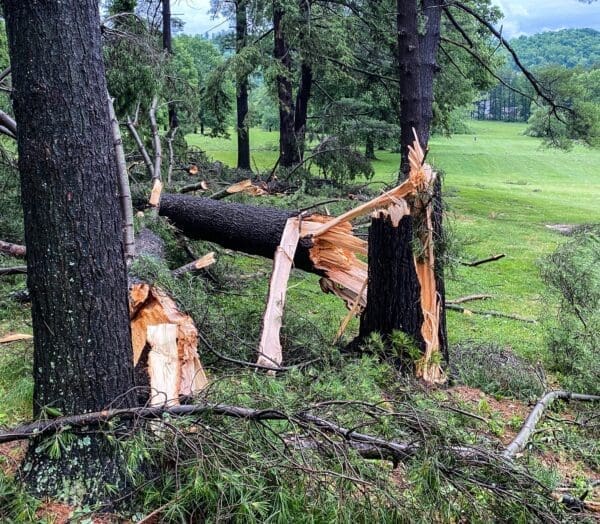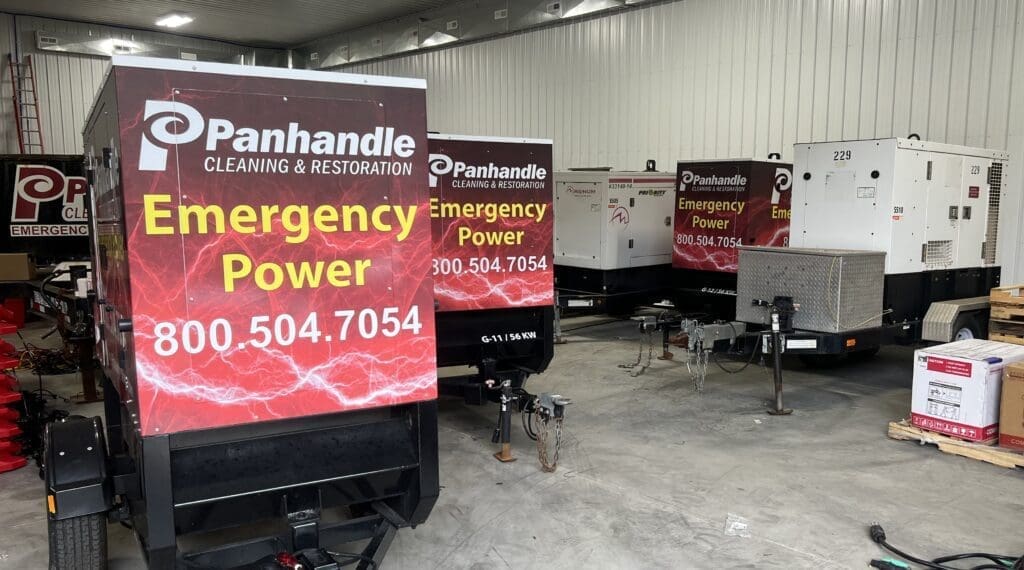
“We evacuated to our basement, and I honestly thought every window in my house was going to shatter.”
That’s what Josh Contraguerro explained while recalling the tree-ripping, black-out-inducing double derecho that left thousands without power for several days if not for an entire week in June.
“There was that sound. I’ve heard about that sound on the Weather Channel … that train whistle that storms make when they are really, really strong.”
Contraguerro took a moment to survey the damage the storm caused to his property and in his neighborhood before jumping into action of the vice president of special services for Panhandle Cleaning and Restoration. The majority of Wheeling residents were awakened close to 1 a.m. in the early morning hours of June 14 by thunder and an electrifying lightning show that drenched the region and attacked certain areas with tremendous force.
Once assessed, Wheeling Park manager Nat Goudy reported that 50 trees were destroyed within the public facility’s 406 acres, and another 50 or so would need to be removed, too, for safety concerns.

“When you stood in a certain place on the hilltop here in the park,” Goudy said, “you could tell the path the storm took, and you can tell when it weakened near the end of the golf course.”
Contraguerro and his wife and two children reside in close proximity to Wheeling Park.
“I know there were some local residents who experience damage to their houses or their decks, but I thought it was pretty incredible there weren’t more in the areas where the most trees were downed by the storms,” he said. “There were a lot of trees that came down in the area of Wheeling Park, but even those trees didn’t cause as much damage as they could have to shelters and the playground.
“In the neighborhood where Stamm Lane is, I thought there would have been more damage to their homes there, but our (Panhandle) crews were only called to a couple, and that surprised me,” Contraguerro explained. “And Thank God there were no fatalities because, based on what the winds and rains left behind, there could have been.”
More than 1,500 employees of American Electric Power were summoned to the Upper Ohio Valley from other areas of the Mid-Atlantic Region, and restorations began about 24 hours after the storms downed and snapped trees and telephone poles.

“Our crews handled a lot on a daily basis but when something like those storms rolls through, there are going to be issues,” said Joelle Moray, manager of external affairs for AEP.“We welcomed hundreds of employees from outside the area and they worked in shifts for days until power was restored for our customers.
“The restorations took place in phases because one downed line fixed this part of town but not that one, so on. It was like they were building a puzzle so they could bring electricity back to people as quickly as possible,” she said. “But a double derecho? I’ve been told by the people I work with that someone only sees a storm like that once in their career, and I hope that’s it for me.”
The Contraguerro family, however, is in the disaster business, and now that Panhandle Cleaning and Restoration operates an office in Sarasota, Fla., the East Coast’s hurricane season has a new meaning for everyone inside the company’s South Wheeling headquarters. The double derecho, though, offered a little bit of everything when it comes to service offered.
“The storms we had here in the Wheeling were very unique because they were very unlike what we normally see in this region,” Josh explained. “Sometimes we experience a storm, and we’ll have some flash flooding in one neighborhood, and other times we’ll have a storm, and there will be a need for generators because of the loss of power.
“But this one involved a lot of everything,” he said. “We had water in basements, we had massive amounts of power outages, we had trees going through roofs, and we had a huge need for temporary air conditioning. We had to keep a lot of businesses and medical facilities up and running for almost an entire week until the folks from AEP were able to get everything hooked back up again.”

